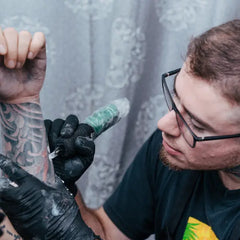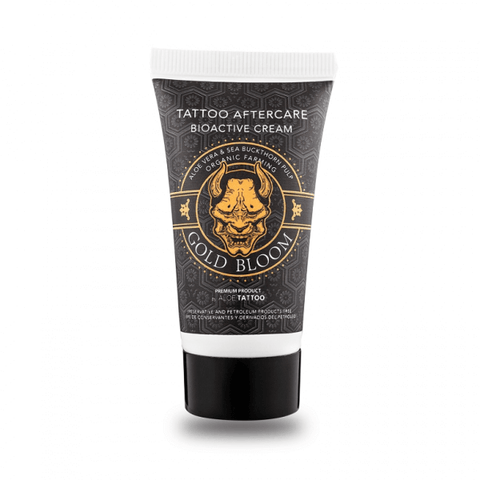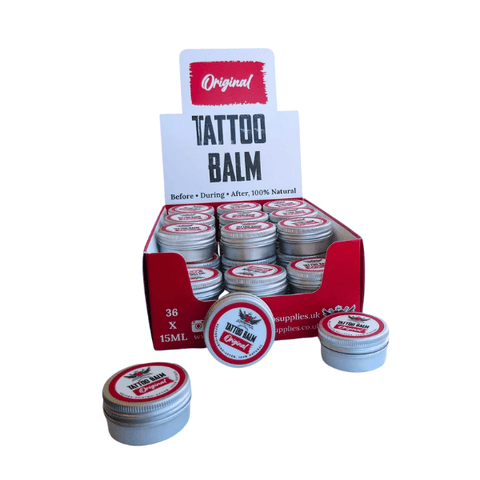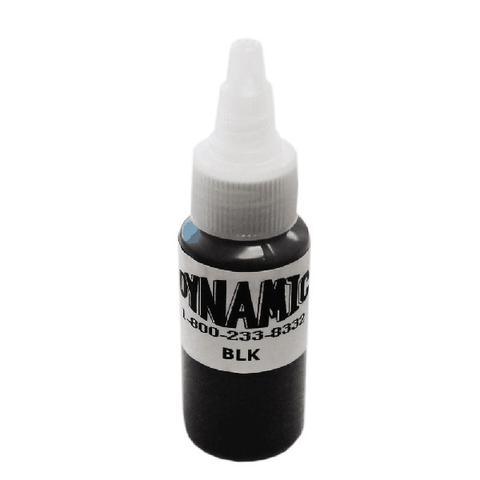Best tattoo cover-up solutions for wrong tattoo style revealed

Tattoo cover-ups are a big part of a tattoo artist's job, especially when clients want to change tattoos they don't like anymore. These projects can be tricky because they involve covering up the old design with a new one that both looks good and makes the client happy.
This guide focuses on the best ways to handle these challenges, from picking the right colours to designing tattoos that effectively hide the old ones. It's all about giving tattoo artists the tools and knowledge they need to turn an unwanted tattoo into something their clients will love again.

What is the meaning of a cover-up tattoo?
A cover-up tattoo is a new tattoo that's inked over an existing one, essentially concealing the old design with a new piece of art. This is often done to hide tattoos that are no longer desired, whether due to their design, meaning, or quality.
The process involves strategic planning to ensure the new design effectively masks the old one. It is a popular choice for those looking to transform or update their body art without removing it entirely.
Tattoo cover-up solutions by style
From minimalist to complex tattoo
Consultation is key
Begin with a thorough consultation to know your client's new vision. This is crucial for aligning expectations and ensuring the cover-up aligns with their current style and personality.
Design planning
When transitioning from a minimalist design, the simplicity of the original tattoo can actually work to your advantage. Use the existing lines as a foundation to build the new, more complex design. Incorporate elements that seamlessly blend the old and new, ensuring the original tattoo is cleverly masked within the intricate details of the new artwork.
Bold colours and shading
Utilise bold colours and shading techniques to effectively cover the minimalist design. Darker shades can easily mask lighter inks, and strategic shading can add depth, transforming the tattoo into a piece with more complexity and texture.
From bold to subtle tattoo
Fading techniques
Before working on a subtler cover-up, consider fading the original tattoo with laser removal techniques. This process doesn't have to completely erase the old tattoo but can lighten it enough to make the cover-up process smoother, allowing for a more delicate design to take place.
Strategic design choice
Choose a design that can incorporate the bold lines or dark shades of the original tattoo into shadows or background elements of the new tattoo. This technique allows you to use the intensity of the old tattoo to your advantage, creating depth and interest in the subtler design.
Skillful use of negative space
Negative space can be a great tool in transforming a bold tattoo into a more subtle piece. By using the skin's natural colour as part of the design, you can create delicate, intricate patterns that distract from the boldness of the original tattoo, offering a fresh and elegant new look.
From abstract to realistic
Design adaptation
Use the abstract patterns as a base to sketch the realistic elements. For instance, abstract shapes can evolve into backgrounds or shadows in a realistic scene. This transition allows the original tattoo to blend seamlessly with the new design.
Technique and precision
Realistic tattoos demand precision and technique, especially when dealing with light and shadow to create depth. Focus on the details that will make the subject of your tattoo come alive, whether it's the fur on an animal or the petals of a flower.
From colourful to monochrome
Fading and lightening
Consider lightening the existing colours if they are too vibrant to make the transition smoother. This step may involve laser treatments, which will prepare the canvas for the new monochrome design.
Shading techniques
Mastering shading techniques is crucial for a successful monochrome tattoo. Use varying shades of black and grey to create contrast, depth, and dimension, transforming the colourful chaos into a cohesive monochrome piece.
Simplicity and elegance
A monochrome tattoo thrives on simplicity and elegance. Focus on clean lines and precise shading to ensure that the transition from colourful to monochrome doesn't lose the essence of the original design but rather enhances it in a new light.
From tribal to modern
Incorporating elements
Identify elements of the tribal tattoo that can be incorporated or reimagined into the modern design. This can involve using the tribal patterns as part of a larger scene or as accents within a modern graphic design.
Blending styles
The challenge is to blend the distinct, bold lines of a tribal tattoo with the often more minimalist and abstract elements of modern tattoos. This blend requires a thoughtful design process to ensure the new tattoo respects the integrity of the tribal while embracing modern aesthetics.
Contrast and balance
Creating a balance between the contrasting styles is key. This might involve playing with textures, line weights, and negative space to merge the tribal and modern elements into a cohesive design.

Challenges involved in covering up a tattoo
1. Colour limitations
One of the most significant challenges in a tattoo cover-up is dealing with colour. Darker inks can easily mask lighter ones, but the opposite is not true. Artists must creatively incorporate the existing darker colours into the new design or opt for even darker shades for the cover-up, which can limit the colour palette and design choices.
2. Design complexity
The original tattoo's design can greatly influence the complexity of the cover-up process. Detailed or large tattoos require more intricate planning and creativity to effectively conceal them. The artist must devise a design that not only hides the old tattoo but also looks intentional and aesthetically pleasing as a standalone piece.
3. Ink saturation and scar tissue
The condition of the skin bearing the original tattoo can pose a challenge. High levels of ink saturation and the presence of scar tissue can affect how the new tattoo heals and appears over time. Scar tissue, in particular, may not hold new ink as well, leading to unevenness in the cover-up tattoo.
4. Client expectations
Managing your client expectations is a crucial aspect of the cover-up process. Clients may have specific ideas or requests that are not possible due to the limitations imposed by the existing tattoo. You must ensure a clear communication and set a realistic expectations to ensure client satisfaction with the tattoo cover-up.
5. Artistic and technical skills
Cover-up tattoos demand a high level of artistic and technical skill. The artist must be adept at blending, shading, and incorporating elements of the old tattoo into the new design in a way that looks natural. This often requires advanced techniques and a deep understanding of tattoo artistry.
6. Healing and longevity
The healing process for cover-up tattoos can be more complicated, as the skin has been tattooed multiple times. There's also the concern of how well the cover-up will age, especially if the original tattoo begins to show through over time. Artists must consider the long-term appearance of the cover-up in their design.
7. Limited options for further corrections
Once a cover-up is done, options for future corrections or alterations become even more limited. The added layers of ink and complexity of the design can make additional cover-ups or changes challenging, if not impossible, without resorting to methods like laser removal for fading.
Easiest tattoo styles to cover up
- Minimalist tattoos: Tattoos with minimal ink, simple designs, and plenty of negative space are easier to cover because the new design can more easily incorporate or mask the existing lines and shapes.
- Light-coloured tattoos: Tattoos with lighter colours, such as light blues, greens, and yellows, are easier to cover than those with dark, saturated colours. The lighter the ink, the more options there are for covering it up with a new design without resorting to very dark colours.
- Fine line tattoos: These tattoos are characterised by thin, delicate lines and lack heavy shading or colour fill. Their minimal ink use makes them more straightforward to cover up with a new design that has more substantial elements.
Best types of tattoos for cover-ups
When considering a cover-up, certain types of tattoos offer more flexibility and creativity, making the process smoother and more likely to yield pleasing results:
- Realistic tattoos: Realistic tattoos can incorporate shading and colour gradients to effectively mask the original tattoo. They allow for a high level of detail and can use the existing tattoo's colour or shape as part of the background or texture in the new design.
- Traditional or neo-traditional tattoos: These styles are known for their bold lines and vibrant colours. The solid fill and strategic shading can effectively cover old tattoos, especially if the original tattoo is faded or light-coloured.
- Tribal or blackwork tattoos: These tattoos use heavy black ink and can cover a wide range of existing tattoos, especially if the original tattoo is already dark or bold. The challenge here is ensuring the new design is something the client is happy with, as these styles are quite distinctive and not to everyone's taste.
- Japanese tattoos: Known for their detailed and cohesive designs that can cover large areas of the body, Japanese tattoos offer the flexibility to incorporate various elements (like koi fish, dragons, and cherry blossoms) that can strategically cover and work around existing tattoos.

Final thoughts
Tattoo cover-ups are a vital skill for tattoo artists, offering a second chance for clients unhappy with their past tattoos. By mastering techniques in colour use, design, and creativity, artists can turn unwanted tattoos into works of art that clients love. This skill not only fixes old mistakes but also showcases the artist's ability to transform and innovate, making every cover-up a unique opportunity to create something beautiful and meaningful.
- Tags: business tips tattoo cover up
- Mark Joshua Luz










